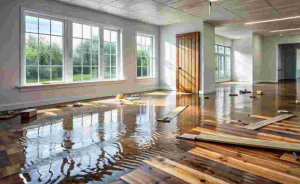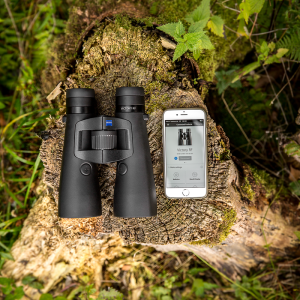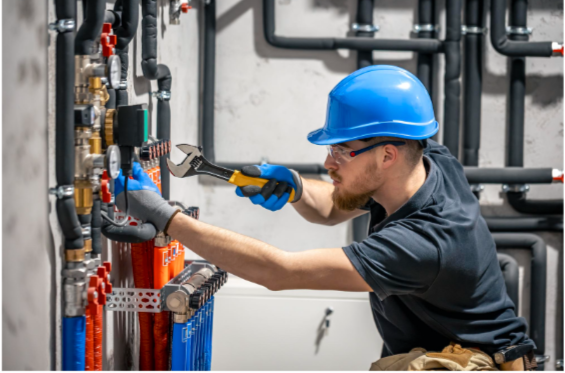Planning a remodel, clearing out your garage, or managing debris from a construction project all come with one simple but critical question: how will you handle the waste efficiently? In most cases, the best solution is a dumpster. Getting the right size, understanding how it works, and loading it correctly can make the difference between a smooth cleanup and a costly headache. At Junk Rescue AZ, we’ve helped countless homeowners and contractors simplify cleanup projects of all sizes. Here’s everything you should know before scheduling your next container.
What a Dumpster Is, and When It’s the Right Call
A dumpster is a durable, heavy-duty container designed to collect and haul away waste from homes, construction sites, or commercial properties. Whether you’re renovating a bathroom, replacing a roof, or tackling a whole-home cleanout, it’s the simplest way to keep debris out of the way and dispose of it safely.
There are three main settings where dumpsters make sense:
- Residential projects: Great for cleanouts, remodels, or yard debris.
- Construction sites: Used for demolition debris, framing scraps, and jobsite waste.
- Commercial properties: Ideal for recurring disposal at offices, restaurants, or apartment complexes.
If your project produces more than a pickup truck’s worth of waste, or if the materials are bulky or dirty, renting a container saves time, labor, and fuel trips.
Types of Dumpsters and What Each Is Best For
Different projects call for different dumpster designs. Here’s how they vary:
- Roll-off containers: Delivered on a special truck and rolled off at your site. These open-top bins are most common for remodels, cleanouts, and construction jobs.
- Front-load or rear-load containers: The lidded bins typically found behind businesses or apartment buildings, serviced regularly on a set schedule.
- Compactor systems: Used by grocery stores, hotels, or industrial sites to handle large, continuous waste streams efficiently.
- Specialty containers: Designed for specific materials like concrete, metal, roofing shingles, or dirt to keep recycling streams clean and costs low.
Choosing the Right Size
Dumpsters are measured in cubic yards. Selecting the right size helps you stay within your budget while avoiding overflows or excess weight charges. Here’s a quick reference:
- 10-yard: Perfect for small projects, single-room remodels, or light debris.
- 15-yard: Good balance for mid-size cleanouts or smaller renovation jobs.
- 20-yard: The most popular choice for kitchen remodels or multi-room cleanouts.
- 30-yard: Best for larger remodels, bulky furniture, or construction debris.
- 40-yard: Ideal for commercial buildouts or major demolition work.
A good rule of thumb:
If you’re removing bulky but lightweight material (furniture, boxes, trim), go one size up.
If your material is heavy (concrete, roofing, plaster), size down to stay under tonnage limits.
When in doubt, share a few photos with your provider, experienced dispatchers can estimate the right size quickly.
Understanding Dumpster Pricing
Dumpster rental pricing can vary, but most quotes include delivery, pickup, and disposal for a set weight and time period. The main factors affecting your total cost include:
- Size: Larger containers cost more to deliver and dispose of.
- Weight limit: Each rental includes a certain tonnage; overages are billed per ton.
- Material type: Mixed loads are pricier than clean loads like concrete or yard waste.
- Rental duration: Many providers include 7–10 days; additional days incur daily fees.
- Distance and access: Hard-to-reach locations or long hauls may add fees.
- Local regulations: Some cities charge permit or environmental fees.
When comparing quotes, ask each company for:
- Base rate and included tonnage
- Overage rate per ton
- Rental period and daily extension rate
- Discounts for clean or recyclable loads
- Permit responsibilities for street placement
- Delivery and pickup policies
This checklist helps ensure you’re comparing apples to apples before booking.
Placement, Access, and Permits
Where you put your container can make a big difference in safety and convenience. A driveway or flat surface is typically best. If you plan to place it on a public street, check local permit requirements. Many municipalities require a right-of-way permit and reflective markers for visibility.
Before delivery, do a quick site prep:
- Clear about 60–80 feet of access for the truck.
- Provide 12–14 feet of width and 20 feet of vertical clearance.
- Place wooden boards under wheels to protect driveways.
- Ensure the surface is firm and level, avoid soft soil or steep slopes.
These steps make drop-off and pickup smooth and prevent unnecessary damage or delays.
What You Can and Can’t Put Inside
Every provider has a list of approved and prohibited materials. Typical accepted items include:
- Household junk, furniture, and light construction debris
- Drywall, wood, flooring, cabinetry
- Roofing shingles (watch total weight)
- Yard waste and brush (if clean)
- Clean concrete, dirt, or brick loads in smaller containers
Avoid disposing of the following in any dumpster:
- Paint, solvents, oils, or fuels
- Batteries and electronics
- Refrigerated appliances without evacuation tags
- Medical or biohazard waste
- Asbestos materials
- Propane tanks or pressurized cylinders
Even a single prohibited item can cause your load to be reclassified and billed at a higher rate. Always confirm with your provider before tossing uncertain items.
Smart Loading Tips
A little strategy goes a long way:
- Start heavy and low: Place dense materials on the bottom and center them.
- Break down bulk: Disassemble furniture or cut branches to fit more efficiently.
- Stay level: Never fill past the top edge, drivers can’t tarp overloaded bins.
- Keep it dry: Cover the container during rain to avoid water weight.
- Pre-stage debris: Gather materials before delivery so loading is quick and efficient.
Sustainability Options
Many dumpster providers now support recycling and diversion programs to reduce landfill waste. Ask if you can separate materials such as:
- Concrete or masonry for aggregate recycling
- Metal for scrap recovery
- Yard waste for composting
- Reusable items for donation or resale
Keeping loads clean not only helps the environment but can also reduce tipping costs.
Homeowners vs. Contractors: Shared Priorities
Homeowners often want simple instructions, punctual delivery, and quick removal. Contractors, on the other hand, prioritize timing, documentation, and site logistics. Either way, both benefit from clear communication and accurate scheduling.
- For homeowners: ask for a one-page “allowed materials” list and text updates for delivery/pickup.
- For contractors: confirm swap-out timing, clean-load bins for heavy materials, and digital weight tickets for job costing.
Avoid These Common Mistakes
- Underestimating size: A second haul costs more than choosing a slightly bigger container.
- Ignoring weight: Heavy debris adds up fast, know your limits.
- Skipping permits: Avoid fines by checking with your city before street placement.
- Hiding prohibited items: They’ll be found at the landfill and billed accordingly.
- Late schedule changes: Notify dispatch at least 24 hours ahead to avoid extra fees.
Final Thoughts
Renting a dumpster doesn’t need to be complicated. With the right size, placement, and understanding of what can go inside, your project stays clean, organized, and on schedule. At Junk Rescue AZ, we’re committed to making waste removal simple, reliable, and affordable, whether you’re cleaning out a home, handling a remodel, or running a jobsite. Visit https://junkrescueaz.com/ to request a quote or schedule your container today.








